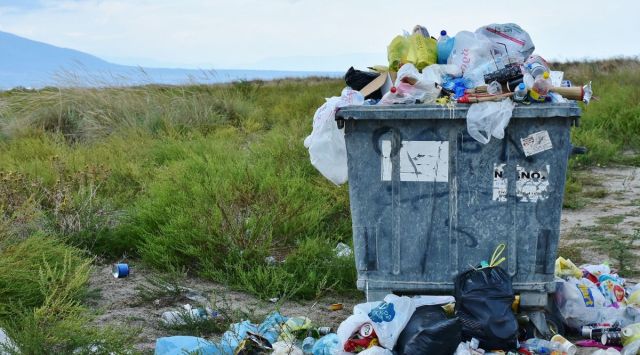Scientists develop method to convert plastic into useful biochar
Researchers have developed a new process to convert two common types of plastic waste into biochar that can potentially be used as a soil additive.
 The scientists converted a mixture of PET plastic, polystyrene and corn waste into a porous biochar. (Illustrative image) (Image credit: Pixabay)
The scientists converted a mixture of PET plastic, polystyrene and corn waste into a porous biochar. (Illustrative image) (Image credit: Pixabay) Scientists at the University of California, Riverside, have developed a method to convert two common forms of plastic into a highly porous form of charcoal, or char, that can potentially be used as a valuable soil additive. The two forms that can be converted are polystyrene, which is used in styrofoam packing and PET which is commonly used to make water bottles.
The highly-porous biochar formed from the new process could potentially be added to soil to improve its water retention capability or to aerate farmlands. It can also fertilise the soil as it breaks down naturally. However, according to Kandis Leslie Abdul-Aziz, who led the research, further work needs to be done to gauge the actual effects of this compound on the soil.
The process begins with the mixing of the two common types of plastic with corn stover, a collective name given to corn waste that includes leaves, husks and cobs of corn. After this, the mixture is treated with highly compressed hot water in a process called hydrothermal carbonisation.
“Surprisingly, the biochar formed from the process is very porous and has a high surface area that is a magnitude higher than typically seen. It can potentially be used for purposes like soil remediation or as a fuel,” Abdul-Aziz told indianexpress.com over email. Abdul-Aziz is the lead author of a paper on the research published in the journal ACS Omega and an assistant professor at the university.
The new research builds on an earlier study where the researchers used corn stover to produce activated charcoal that can filter pollutants from drinking water. During the previous study, the charcoal made from corn stover was activated with potassium hydroxide and was found to be able to absorb 98 per cent of the pollutant vanillin from test water samples.
For the new follow-up study, the researchers wanted to see if the corn stover could be combined with waste plastic to create an effective water treatment compound. After creating activated charcoal from the mix, they found that it was only able to absorb about 45 per cent of the pollutant vanillin from test water samples, making it ineffective as a water treatment solution. But the surprisingly high surface area of the new biochar compound means that it can potentially be used in many applications without turning it into activated carbon.
Of course, the process isn’t perfect. “The typical by-products for plastic-to-char products are divided into gaseous products (carbon dioxide, methane, hydrogen, light olefins) and condensable liquids that consist of olefins, oligomers and aromatics. The gaseous products are not potentially toxic but will have the propensity to increase carbon emissions. On the other hand, the condensable liquids can be upgraded to fuels or chemical commodities,” said Abdul-Aziz when asked about the byproducts of the biochar manufacturing process.
The process requires elevated temperatures to break down the biomass and plastic, which makes it less efficient than the conventional mechanical recycling of plastics.
Now, the researchers are focused on trying to improve the properties of the biochar, including surface area and porosity. They are also working on adding more kinds of plastic to the mixture so that they can develop a potentially “agnostic approach” to plastic recycling.







